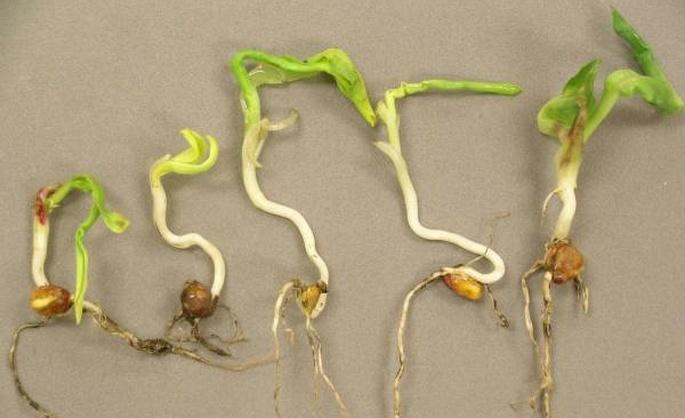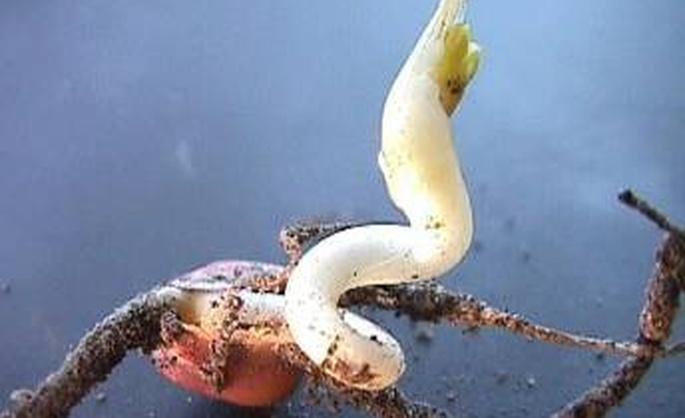Frost resistance of corn
Botanists' claim that the homeland of this crop is South America remains the only one. The history of corn cultivation in Europe began with Columbus, who brought seeds of this crop from Cuba. Over the two generations of human existence, corn has spread around the world and become one of the main fodder and food crops.
Given the center of origin of the crop, there is no need to talk about its frost resistance. It is possible to partially assess the risks of low positive temperatures on corn during its growing season, especially in the early stages of development.
The concept of plant cold tolerance is the ability to resume vegetation without a significant decrease in productivity after exposure to temperatures from 0 to +10°C.
Plants undergo the following main changes when exposed to low temperatures:
- turgor of cells of all aboveground organs decreases;
- proteins decompose and nitrogen-containing products that are toxic to plants accumulate;
- due to the loss of calcium, the structure and functioning of cell membranes are disrupted, which disrupts their permeability and leads to many disruptions in the normal metabolic process;
- cold shock stress proteins are synthesized.
At temperatures below the freezing point of 0°C, corn plants undergo irreversible cell destruction, which significantly affects crop yields and in most cases leads to crop death.
Corn plants in the phase of up to 4 leaves can continue to grow after short-term frosts down to -4°C, as the growth point at this time is below the soil surface, but it is impossible to expect a high yield from such a crop. In this case, the leaf apparatus that was on the soil surface will partially or completely die.
It should be noted that sharp temperature changes from positive during the day to sometimes negative at night leads to disorientation of corn seedlings in the soil and the phenomenon of “twisted seedlings” can be observed. Such plants lag far behind normal plants in development and often die before they reach the surface.


In this regard, it is necessary to minimize the negative impact of low temperatures when growing heat-loving corn.
The optimum temperature for corn seed germination is +12...+15°C, i.e. sowing should be carried out at a soil temperature of +8...+10°C at the depth of planting. These are the temperature indicators that guarantee the normal rapid development of corn plants of any hybrid.
According to D. Spaar, the temperature requirements of corn at different stages of development are as follows:
Plant development phase | Biological minimum, °С | Optimum, °С |
Germination | 8…10 | 12…15 |
Shoots | 10...12 | 15…18 |
Formation and growth of vegetative organs | 10...12 | 16…20 |
Formation of generative organs, intensive growth and flowering | 12…15 | 16…20 |
Maturation | 10…12 | 18…24 |
Given that the geography of the crop has expanded significantly to the north and breeders are working to create new forms tolerant to cold, there are hybrids that begin germination at temperatures of +7...+8°C, but this is the critical biological minimum of the crop.
The claims of imported seed producers about the extreme “cold tolerance” of new hybrids are a marketing ploy.
The problem of early planting of corn in Ukraine is relevant, as large cultivation areas provoke significant risks for producers in terms of the timing of corn sowing.
In the southern and eastern regions, there is limited rainfall during the growing season and extreme temperatures during flowering and grain filling, so growing corn on large areas without irrigation is limited. That is why in these regions there is a risk factor of sowing corn in the early stages in cold soil. However, the experience of the farm in Luhansk region shows that it is possible to sow early early ripe hybrids Gran 220 and Amarok on the background of N 20, which allows to harvest dry grain in August up to 5 tons per hectare.
According to long-term data and meteorological observations, a steady transition to active temperatures above +10°C in the regions of massive corn sowing in the center and west of Ukraine starts on April 17-20. Given that corn seeds germinate within 6 to 10 days in the presence of moisture, we recommend sowing this crop no earlier than April 17 in soil with a temperature of +8...+10°C at the depth of seed placement.

 Choose a country
Choose a country